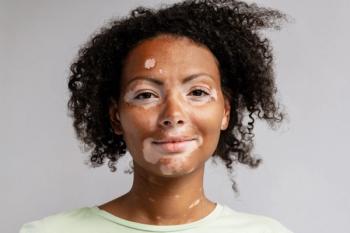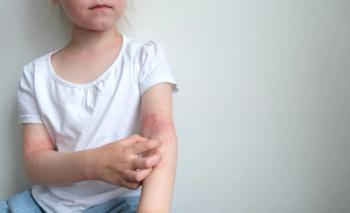
Reduced Mortality Associated With Vitiligo
In a population-based cohort study, researchers explored the mortality of vitiligo as there is limited information about risks of mortality among these patients. The researchers investigated all-cause and cause-specific mortality of patients with vitiligo compared with controls without vitiligo using a nationwide database.
The chances of mortality could be low for patients with vitiligo, according to a fairly recent study published in the
In the population-based cohort study, researchers explored the mortality of vitiligo as there is limited information about risks of mortality among these patients. The researchers investigated all-cause and cause-specific mortality of patients with vitiligo compared with controls without vitiligo using a nationwide database.
Exploring vitiligo mortality in a national cohort would allow greater understanding of the burden of the autoimmune disease and lead to deeper understanding of its nature, authors of the study claim.
The study included a total of 107,424 patients in Korea with vitiligo and 537,120 matched controls without vitiligo who were observed between 2002 and 2019. The mean age of included patients was ~48 years, and 39.61% were male.
Patients’ medical records were thoroughly analyzed and revealed that individuals with vitiligo experienced significantly reduced risks of mortality across a spectrum of diseases.
Of these findings, the risks associated with infectious, oncologic, hematologic, endocrine, neurologic, cardiovascular, respiratory, and renal/urogenital diseases were markedly lower in patients with vitiligo, the study revealed.
Previous studies have highlighted the co-occurrence of vitiligo with various autoimmune diseases, pointing to shared genetic alterations involved in immune activation and regulation. Specific immune responses have been identified as contributors to melanocyte destruction, authors shared.
What sets this study apart is that vitiligo seems to present a protective effect against mortality, particularly when it comes to infections, inflammation, and cancers.
Researchers suggest that the role of autophagy in vitiligo, a self-degradation process that regulates cellular homeostasis, could also relate to their findings.
Previous studies suggest that increased expression of autophagy markers in vitiligo skin may play a protective role against metabolic stress and external degenerative processes. In addition, autophagy's regulation of the innate immune system could provide defenses against viral infections.
The study also aligns with prior research indicating a reduced risk of malignancies in patients with vitiligo. In fact, the risk of internal malignancies, including cancers of the colon, rectum, ovary, and lung, was significantly decreased in individuals with vitiligo. The findings suggest that vitiligo may provide a form of immunity against cancer development.
Additionally, the study considers the role of treatments for vitiligo in contributing to reduced mortality. While there is no drug specifically approved for vitiligo, treatments such as phototherapy could have broader health implications.
For example, studies have suggested that ultraviolet B radiation, a component of phototherapy, may influence internal organs beyond the skin, offering benefits such as reducing the risk of atherosclerosis and improving blood pressure, the study mentioned.
However, there are certain limitations to the study which include the absence of information on disease severity and subtypes of vitiligo, potential unmeasured factors, and not having different populations observed.
Authors of the study believe the findings contribute toward the mortality risks associated with vitiligo, challenging previous beliefs about the outcomes of autoimmune conditions.
They added the unexpected protective effects observed in vitiligo patients open avenues for further research to unravel the underlying mechanisms and potential implications for patient management.
Newsletter
Get the latest industry news, event updates, and more from Managed healthcare Executive.

















































